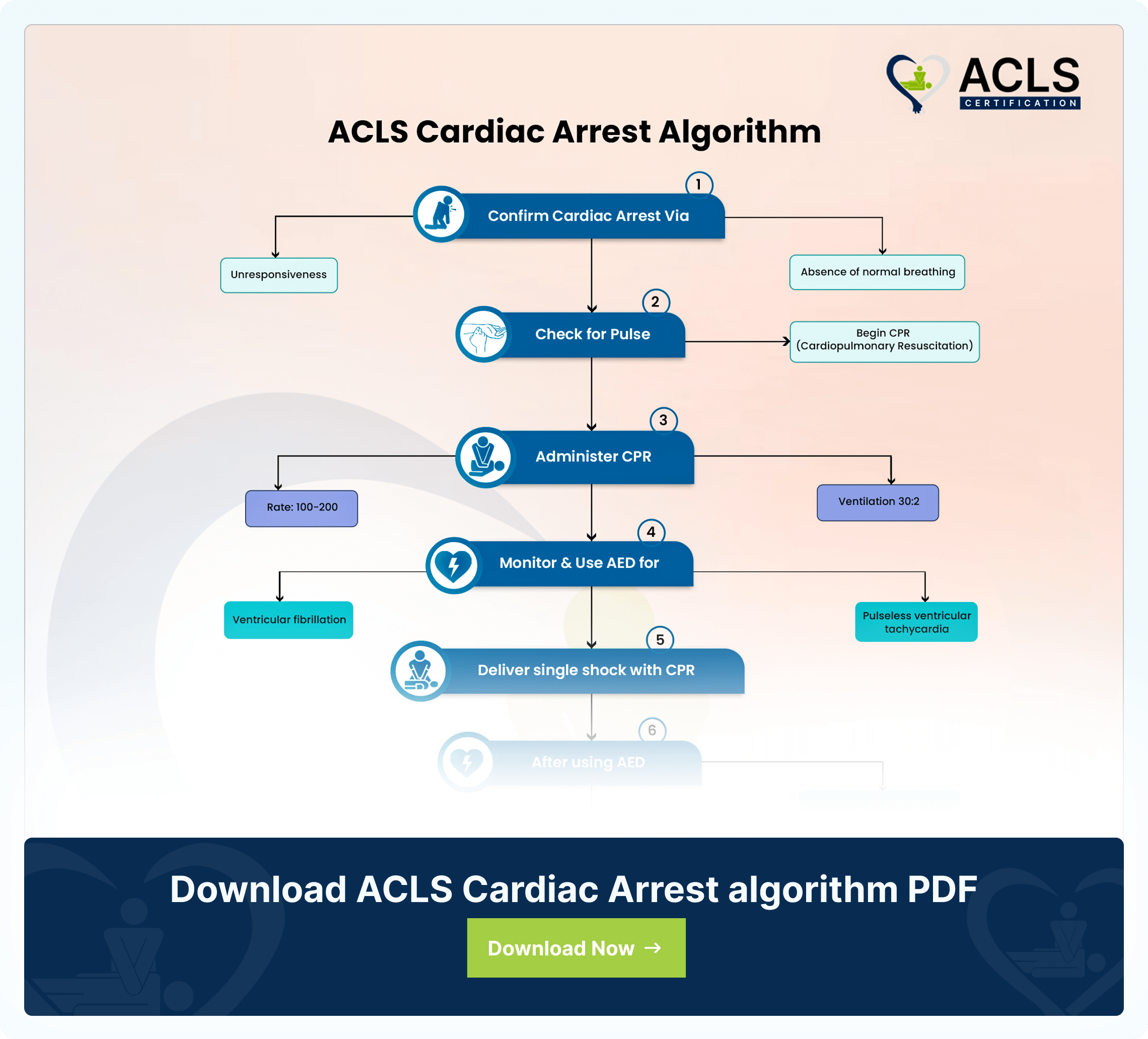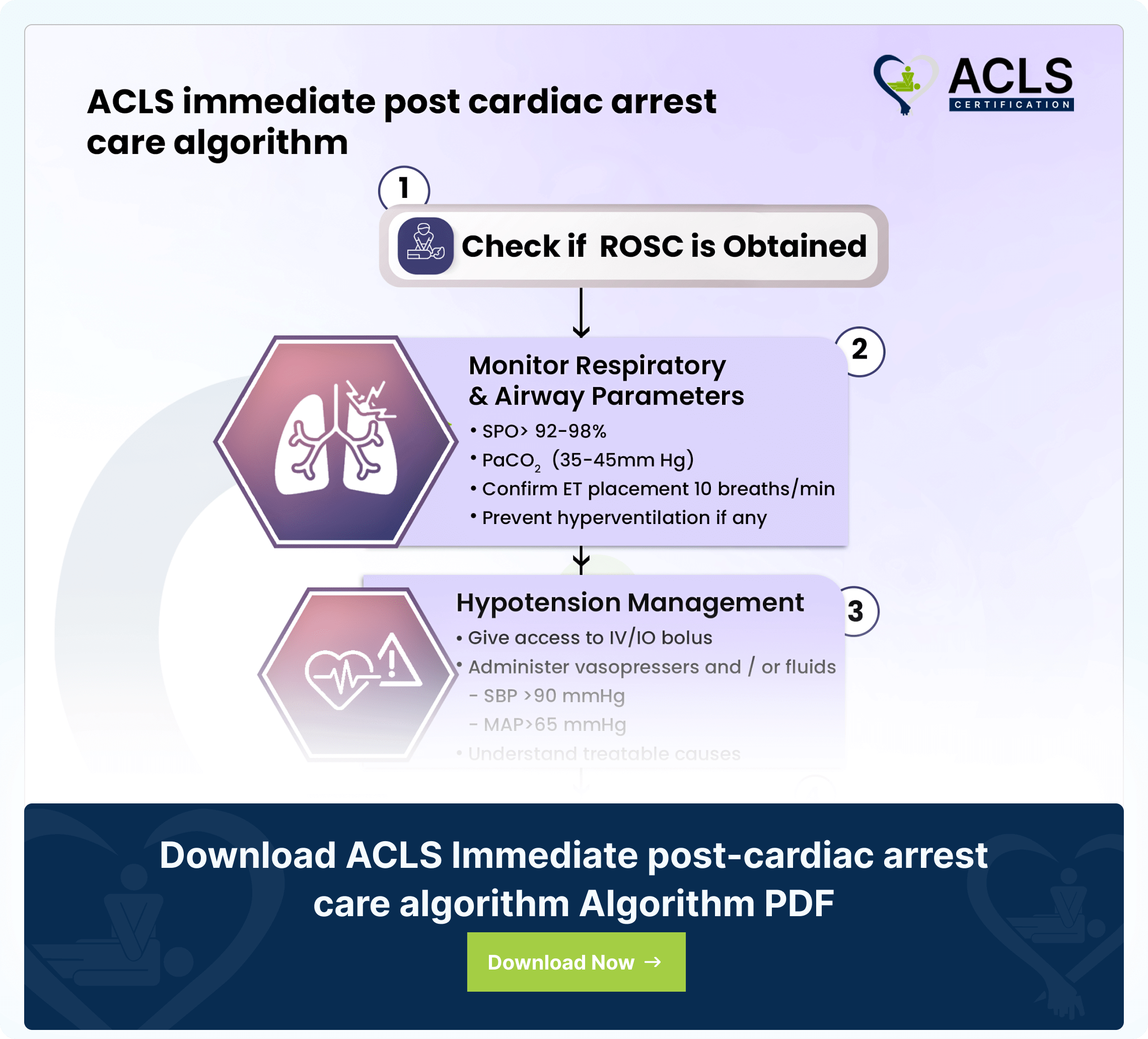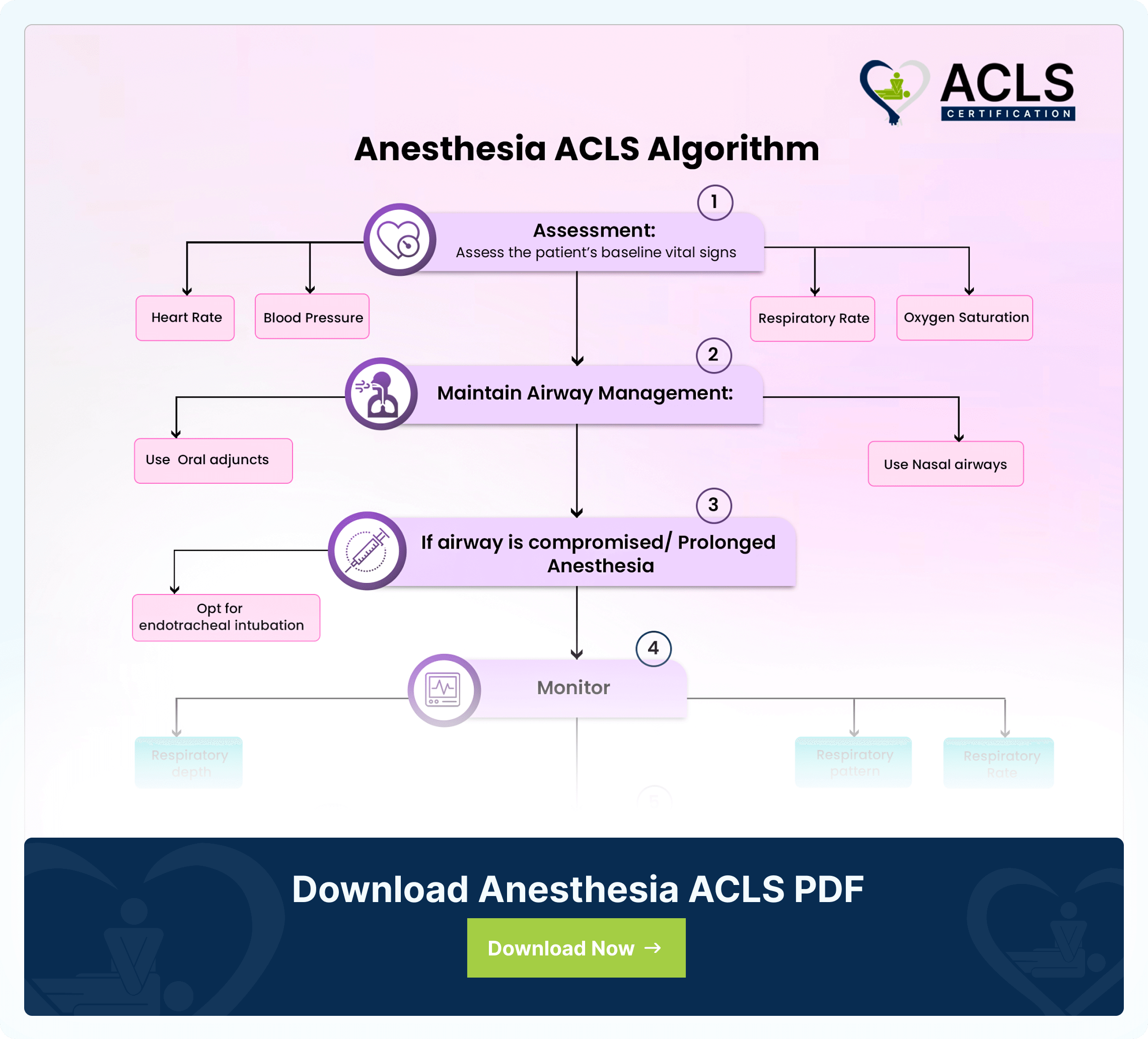The Advanced Cardiovascular Life Support (ACLS) Anesthesia algorithm is a structural framework for healthcare workers. The step-by-step approach optimizes patient outcomes and identifies risks related to anesthesia administration. This guideline ultimately helps healthcare professionals maintain the cardiovascular health of patients who have undergone surgical procedures. The flowchart below will help highlight the chronology of steps and the importance of structural approach to postoperative emergencies.
Step by step analysis of flowchart
- Assessment
- Assess baseline vital signs
- Heart rate
- Blood Pressure
- Respiratory Rate
- Oxygen Saturation
- Maintain Airway Management:
- Use Oral adjuncts or Nasal airways
- If airway is compromised/ Prolonged Anesthesia
- Opt for endotracheal intubation
- Monitor
- Respiratory depth
- Respiratory pattern
- Respiratory Rate
- Utilize Capnography and Pulse Oximetry
- Use Electrocardiogram (ECG) to detect
- Dysrhythmias
- Myocardial ischemia.
- Conduct ST segment morphology
- Medication Administration
- Vasopressors for Blood Pressure
- Amiodarone for Arrhythmias
- Consider Synchronized Cardioversion for
- Ventricular tachycardia
- Supraventricular tachycardia with hemodynamic compromise
- Monitoring throughout perioperative period.
Highlights of Anesthesia ACLS Algorithm
- Assessment:
Begin with assessment, followed by monitoring of the patient’s vital signs. - Airway Management:
Ensure proper ventilation. Advanced airway intervention might be necessary. - Cardiac Monitoring:
Patient’s cardiac rhythm and vital signs should be monitored. Specially focus on signs of dysrhythmias or myocardial ischemia. - Medication Administration:
Administer medications to optimize cardiovascular function. Prescribe medicines to manage any emergent arrhythmias or hemodynamic instability. - Treatment of Emergencies:
Be ready to respond rapidly in cases of acute cardiovascular or respiratory emergencies. - Collaboration:
Work closely with other members including anesthesia providers to implement appropriate interventions. - Continuous Reassessment:
Keep reassessing the patient’s condition. Adjust the management plan as necessary. Decisions should be based on the changes in clinical status or the progression of the procedure.
Download Anesthesia ACLS Algorithm PDF
Resources
- Intraoperative advanced cardiac life support (ACLS): https://www.uptodate.com/contents/intraoperative-advanced-cardiac-life-support-acls
- Anesthesia advanced circulatory life support: https://www.ncbi.nlm.nih.gov/pmc/articles/PMC3345112/
- Algorithms for advanced cardiac life support: https://www.acls.net/aclsalg
- Anesthesiology-Centric ACLS: https://www.gdimov.eu/GDimov/CPR/AACLS.pdf
- Perioperative Resuscitation and Life Support Certificate (PeRLS): https://www.asahq.org/education-and-career/educational-and-cme-offerings/perls/perls-faq
- ACLS: Special circumstances: https://www.openanesthesia.org/keywords/acls-special-circumstances/
- Intraoperative advanced cardiac life support (ACLS): https://medilib.ir/uptodate/show/118690
All ACLS Algorithms

ACLS Acute Coronary Syndromes Algorithm
The ACLS Acute Coronary Syndromes Algorithm guides healthcare providers in the assessment, diagnosis, and treatment of patients with suspected or confirmed acute coronary syndromes

ACLS Cardiac Arrest Algorithm
The ACLS Cardiac Arrest Algorithm emphasizes CPR, defibrillation, drug therapy, and post-resuscitation care. It also highlights the importance of teamwork in optimizing outcomes during cardiac emergencies

ACLS Immediate post-cardiac arrest care algorithm
The ACLS immediate post-cardiac arrest care algorithm guides critical interventions for patients post-resuscitation



